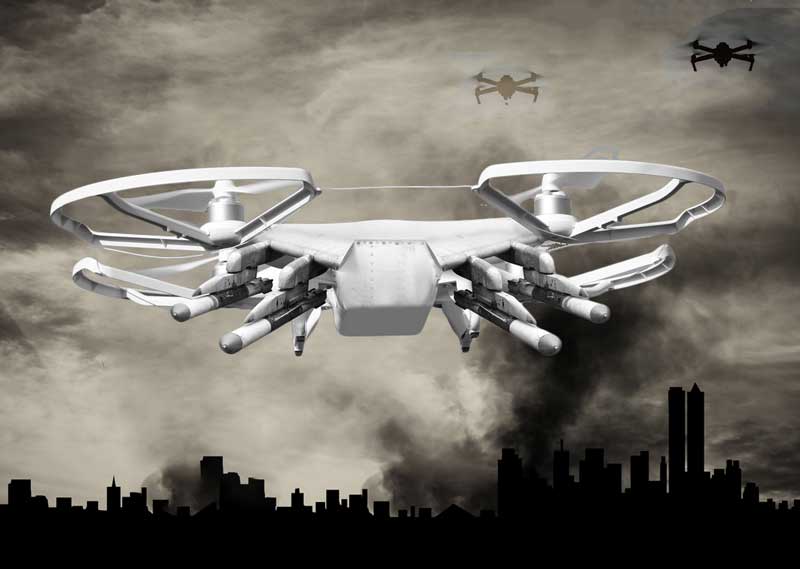The next drone assassination
By Elisabeth Eaves | August 6, 2018

On Saturday someone tried to assassinate Venezuelan President Nicolas Maduro using two drones loaded with explosives. At least, that’s what Venezuelan officials say happened, and video does suggest that something very startling occurred as the president was giving a speech, causing most of his audience to bolt. Maduro, who was unharmed, blamed right-wing groups, the president of Colombia, and people living in Florida. An obscure group called the National Movement of Soldiers in T-shirts claimed responsibility, according to Reuters. News reports piled up over the weekend, offering conflicting reports about what exactly went down.
Whatever happened on Saturday, there is no doubt that a little-known, modestly funded group could launch a drone assassination. Governments, of course, have for years developed military drones, more formally called unmanned aerial vehicles or UAVs. (The United States deploys lethal drones, and Iran’s drone program has been decades in the making, to cite just a couple of examples.)
But while governments pour their millions into deadly UAVs, it is relatively cheap and easy for anyone to adapt a commercially available drone into a weapon. Beginning around 2016, militant groups in Iraq, Syria, and Ukraine began to use modified commercial drones for offensive strikes. Last year, writing in the Bulletin, Michael Horowitz and Itai Barsade of Perry World House explored what militant groups do with drones:
In addition to dropping munitions on unsuspecting soldiers, they can strap explosives to drones to generate devastating effects. For example, militants can crash an explosive-laden drone into a target, creating a sort of MacGyvered cruise missile. Alternatively, militants can booby-trap drones. In one case, Kurdish fighters trying to examine a grounded drone died when it exploded. In Ukraine, Russian-backed separatists use drones to target military infrastructure and cause immense damage. For instance, they used a commercial drone to drop a Russian-made thermite hand grenade on an ammunition depot in Eastern Ukraine, causing an inferno and close to $1 billion in damage. Put simply, commercial drones are enabling militant groups to engage in a more diverse array of missions to advance their goals against militarily superior forces.
While drones have not yet changed the outcome of a war, they are more than a serious annoyance for conventional armies, which must strategize ways to fend them off.
“Stopping drone proliferation is not an option because of the ubiquity of the technology,” Horowitz and Barsade note. And as Wired reporter Brian Barrett writes, “most good drone defenses come with drawbacks and caveats.” Which means we won’t wait long for news of another drone attack by soldiers who are part of no army.
Publication Name: Reuters
To read what we're reading, click here
Together, we make the world safer.
The Bulletin elevates expert voices above the noise. But as an independent nonprofit organization, our operations depend on the support of readers like you. Help us continue to deliver quality journalism that holds leaders accountable. Your support of our work at any level is important. In return, we promise our coverage will be understandable, influential, vigilant, solution-oriented, and fair-minded. Together we can make a difference.
Keywords: drones
Topics: What We’re Reading















